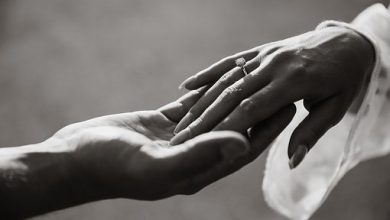
‘In an Artist’s Studio’ by Christina Rossetti is a standard Italian or Petrarchan sonnet that is made up of fourteen lines and can be separated into one set of eight lines also known as an octave, and one set of six lines also known as a sestet. The first collection of lines provides the reader with the basis of the story or problem, and the next six lines provide a conclusion or an answer to the above.
In an Artist’s Studio | Summary and Analysis
In an Artist’s Studio | Analysis, Lines 1 and 2
One face looks out from all his canvases,
One selfsame figure sits or walks or leans;
The speaker of ‘In an Artist’s Studio’ begins the poem by describing the inside of the artist’s studio. The speaker while standing in the studio sees all his work and she sees a similarity in each of the art that is on display on the canvas. The speaker seems in awe of the repetition of the single figure in all of the artist’s paintings. Everywhere, they look, they see the same face staring back at them. The artist paints a face from his obsession with a particular person. The same figure is seen on each canvas doing various menial things like standing, sitting or walking. No matter the task, the figure is the same, on a different canvas, doing something else.
In an Artist’s Studio | Analysis, Lines 3 and 4
We found her hidden just behind those screens,
That mirror gave back all her loveliness.
The artist had rendered such beautiful masterpieces of the girl that the speaker felt as if she was present behind the screens herself. Through the framed mirror, they saw her in all her glory. This is a depiction of the artist’s skills that he is able to make a painting lifelike but this also concerns the reader because it is clear from these lines that the artist is obsessed with this woman, so much that he only uses her as a muse in all his art and only has pictures of her in his studio.
In an Artist’s Studio | Analysis, Lines 5 and 6
A queen in opal or in ruby dress,
A nameless girl in freshest summer-greens,
The artist paints the same girl in different ways, sometimes she is a queen in opal or red and sometimes she is a nameless girl in the freshest summer- greens. The artist uses the same face but gives her different identities and dresses her in a variety of colours. In his imagination, she is anyone he wants her to be. The speaker does not know the name of the girl but is able to see the artist’s obsession with her clearly.
In an Artist’s Studio | Analysis, Lines 7 and 8
A saint, an angel- every canvas means
The same one meaning, neither more or less.
The artist also has illustrations of her in the form of a saint or an angel. This depiction gives the reader a feeling that the artist looks up to the girl in the paintings as his saving grace. It is possible that he feels like only she can save him. The speaker further says that they look at every canvas and it is all, more or less, the same. The lines concern the readers because the artist’s obsession with this girl does not seem like a healthy thing. He seems to be consumed by her and is only thinking and painting about her day and night.
In an Artist’s Studio | Analysis, Lines 9 and 10
He feeds upon her face by day and night,
And she with true kind eyes looks back on him,
The above two lines are a short summary of what the reader has already deluded from the previous lines. It seems like the artist is so consumed by this girl that he just looks at her and paints her all the time. The paintings are so realistic and life like that it seems like the girl is looking back at the artist with ‘true kind eyes’. The glaring obsession is visible and the reader cannot help but be concerned by it and feel a sense of dread for the upcoming lines.
In an Artist’s Studio | Analysis, Lines 11 and 12
Fair as the moon and joyful as the light;
Not wan with waiting, not with sorrow dim;
The poet compares the girl in the artist’s paintings with the moon and light. It is obvious that she is indeed very beautiful thus ‘fair as the moon’, she also seems to be a happy and hopeful person who is ‘joyful as the light’. The speaker says that when the artist will return to his studio, she would be waiting for him with the same smiling face; she would not become ‘wan with waiting’. The artist has immortalised the girl in his paintings and she would forever look as fair in them as she does now.
In an Artist’s Studio | Analysis, Lines 13 and 14
Not as she is, but was when hope shone bright;
Not as she is, but as she fills his dream.
The concluding lines of the sonnet make it clear that she is not so ‘fair’ and ‘joyful’ now. It seems like, with time, her qualities have dimmed. But the paintings have made her immortal and she would forever be remembered as in those. The speaker admits that the girl present in those paintings does not exist. She has changed over time and become a different person or maybe she was never really a real person and only exists in the artist’s thoughts and dreams. The ending leaves the reader with a lot of questions about both the artist and the unnamed girl as neither is physically present in the poem but is only seen through the artist’s paintings.
In an Artist’s Studio | About the Author – Christina Rossetti
Christina Rossetti was born in London in 1830. As a young girl, she enjoyed studying classics, as well as novels and fairy tales. Her writing career began when she was twelve years old, and she published her first poems in 1848 when she was 18. Her most famous collection, Goblin Market and Other Poems was published in 1862 and was widely praised.
She became known as the greatest female poet of her time, with much of her critical acclaim coming from the title piece of the book, Goblin Market and Other Poems. As well as being known for her writing, her political and social beliefs made her even more notorious. She was openly opposed to slavery, which was still being widely practised in the American South, as well as cruelty to and experimentation on animals. Rossetti developed breast cancer in 1893 and died in 1894. Her grave can be found in Highgate Cemetery in London.





